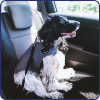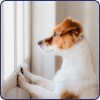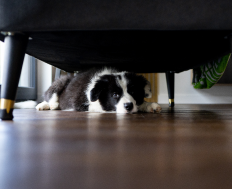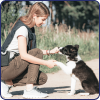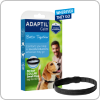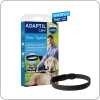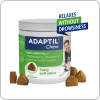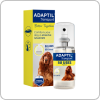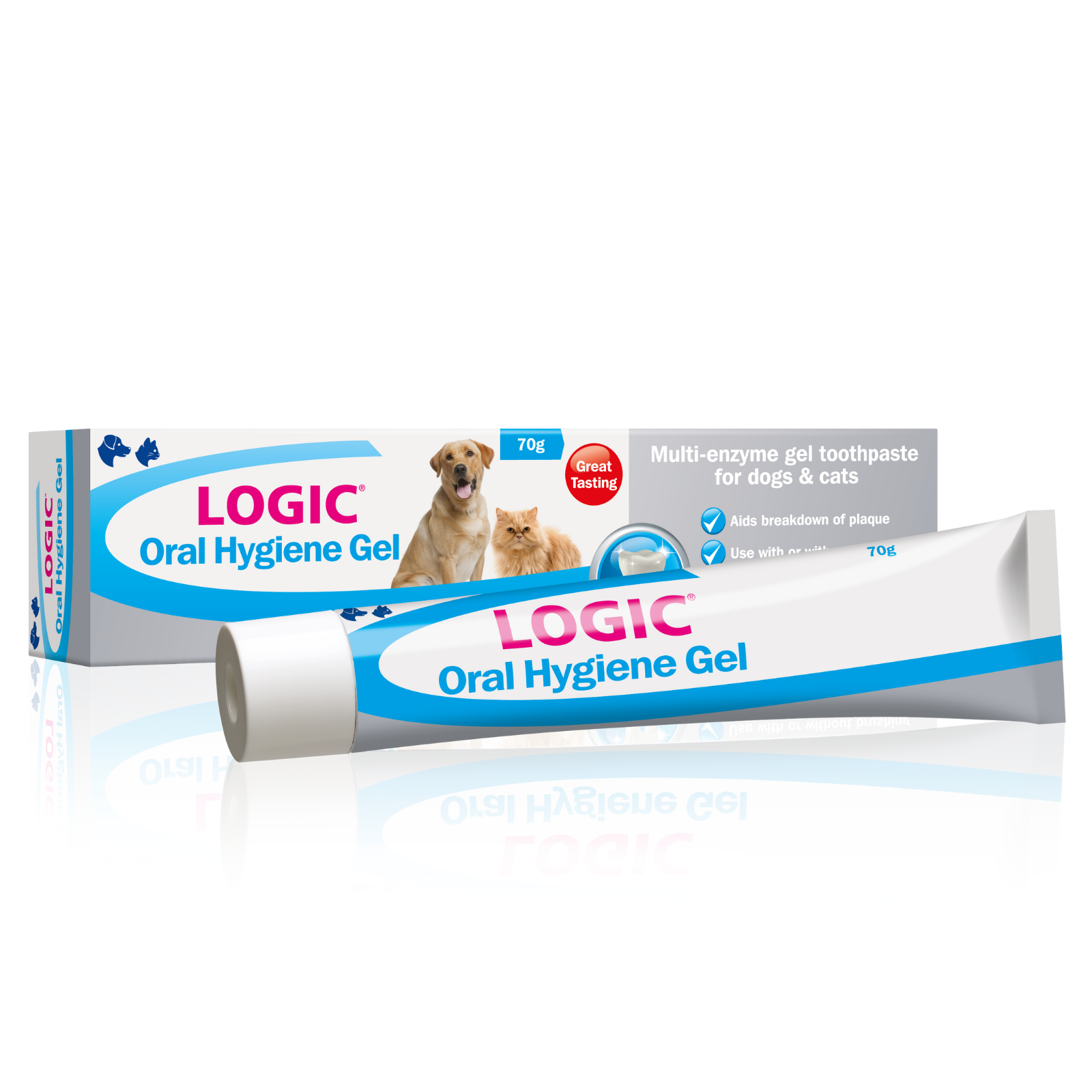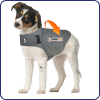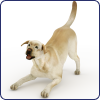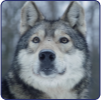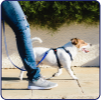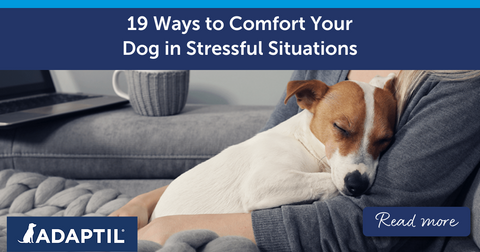
How Does the Change of Season Impact Your Dog? A Pooch’s Point Of View
Life is full of surprises as a dog, and changes in our lives can shake us up a bit! Recently, I’ve noticed that it’s been getting a lot cooler on my walks, and the sun isn’t shining as much. When talking to my furry friends, we’ve all agreed that in the cold weather, dogs can experience changes that affect how we feel, play, and even behave.
I know that my humans do all they can to help me adjust to these changes, but there are some things they might not fully understand. So today, I’m going to take you through some of the changes in a dog’s behaviour you humans may notice. I’ll also share my top tips on what can help me stay happy and comfortable when the weather gets cooler.
Physical Changes for Dogs in Cold Weather
As well as changes in our behaviour, some of the changes for dogs in autumn and winter can also be physical. These physical changes can sometimes be hard for our humans to spot, but they’re really important to know about.
I’d call myself a seasoned pooch (excuse the pun), so I’ve got a list of some of the changes I’ve experienced when cold weather comes around:
-
Weight gain – If it’s cold outside, we might not be as active. Our ancestors used to eat more food to keep warm, so I might find myself eating a bit more during the winter. However, now that my humans keep me warm and cosy, I don’t need to eat
-
as much. During the winter, my food portions are adjusted, and I spend a lot of time playing indoors to stay healthy.
-
Increased shedding or coat changes – Some of my four-legged friends are really furry and grow thicker coats in preparation for winter. This means that they are more likely to shed as their coat changes, which also means more work for the hoover!
-
Increased joint stiffness – Colder temperatures can affect our joints. This is quite common in my senior dog friends or those with arthritis. In winter, we may be slower to get up, more reluctant to go on walks, or show signs of discomfort like walking with a limp. If you notice we have stiff joints, it’s a good idea to book us in for a vet checkup.
-
Dry skin and coat issues – Although I love the warmth from the heating at home, this and the lower humidity can dry my skin out. No one likes to experience feelings of itchiness, flaking, or, *gasp*, a dull coat. On the rare occasion this has happened to me, my human uses moisturising shampoos and gives me supplements for my skin made specially for dogs

How A Dog’s Behaviour Changes
For humans, you might notice changes in your dog’s behaviour when winter rolls around. I know that my humans also feel a bit different when it’s cold, and it’s the same for us pups! The changes in our daily routine can affect us in different ways. Make sure to look out for:
Lower Energy Levels
When it’s cold, the days seem to go quickly, and I spend a lot more time in the dark. The lack of daylight and cold temperatures can make me feel more tired and less excited to go outside, although I do love playing in the autumn leaves!
However, some of my friends that live in different places find the cooler weather more comfortable and are a lot more active than me. I also know that some dogs find that this time of year is the best time to be outdoors, as it’s not too hot or cold.
My top tip for humans would be to look at your dog’s body language, as this will tell you everything you need to know about how we feel. My pet parents completed the ADAPTIL Dog Body Language Course , and now I feel like they can understand my feelings a lot better!
Increased Restlessness or Boredom
For dogs, the cold weather often means that we might not want to go outside as much. If we’re not getting enough exercise or stimulation, we can become restless or bored. When I don’t have an outlet for my energy, I can find it difficult to cope, which can make me stressed.
To help, my pet parents give me plenty of indoor enrichment options, like my favourite puzzle toys or training games. These activities provide both physical and mental stimulation, helping me feel less bored.

Changes in Sleep Patterns
Another change in dogs’ behaviour during the winter is our sleeping patterns. I get more tired when the weather’s cold, which means I sleep a lot more. The shorter days and darker nights can disrupt my natural sleep-wake cycle, and this can make me feel sleepier.
Did you know that humans’ brains produce more melatonin during the darker days, making them more tired (I’m one smart pooch you know!). This also happens to us, meaning that during the winter months you’re likely to find us curled up having a snooze!
Clinginess or Seeking Warmth
We love attention from our humans any time, but it’s more likely that you’ll notice us being a bit clingier when it’s cold. I can sometimes experience a lower mood during the winter, and spending time with my pet parents can make me feel a lot more at ease. I’d like to think that my snuggles make them feel happier too!
I can also become clingier because I want the warmth. The winter can be cold, so I usually seek out warm spots like blankets, radiators or my human’s lap (that’s my favourite, of course!). My pet parents often put my bed in a warm place so I can grab my old blanket and have a cosy sleep.
Tips for Supporting Dogs in Autumn and Winter
Make Sure We’re Comfortable and Warm
From experience, the behaviour of dogs can change when they’re cold, so giving us cosy bedding is something we’ll love! Place our bedding away from drafts in an area that gets as much light as possible. If needed, you can also give us an extra layer to keep us warm on walks.
To help us feel even more comfortable, you can plug in an ADAPTIL Calm diffuser near to our bed. The natural pheromones that only we can sense can help us feel reassured and comfortable. It helps us to relax and adjust to changes and can help us to rest in new areas.

Maintain Exercise Routines
Even though we might be a bit sleepier when it’s cold, it’s still great for us to have exercise. Shorter, more frequent walks, indoor play sessions or training can help keep us active. There are also lots of ways to add mental stimulation to our day.
I do love my snuffle mats and puzzle toys but have also been known to enjoy learning new tricks with a training session or playing “sniff out the treat” with my parents (like what you would call ‘hide and seek’).
Making use of the natural daylight for winter walks when possible, can help regulate our mood too. We appreciate when our humans make use of the light when they can. But if we don’t go on walks until later in the evening, my pet parents always make sure I’m visible so I’m not in any danger. My reflective yellow collar clipped next to my ADAPTIL Calm Collar is not only a fashion statement, but it also means they can spot me easier.
Regular Grooming
As mentioned before, some of my furry friends can shed a lot in winter! So, regular brushing and grooming can help to remove any hairs that are being shed. Brushing can also help to distribute our natural oils and keep our coat healthy. It also allows our humans to see our skin health to make sure there are no issues.
Hydration and Nutrition
Dogs in the cold weather still need plenty of water to keep us happy and healthy. Something that I like during the winter is having my meals warmed up, but make sure they’re not too hot! My humans also sometimes give me broths that are warm and comforting. This food talk is sure making me feel hungry… Snack time, anyone?
For more advice on life with your four-legged friend, continue exploring the rest of our blogs online. Or if you’d like to receive the latest news and advice straight into your inbox, don’t forget that you can also sign up to our newsletter.
